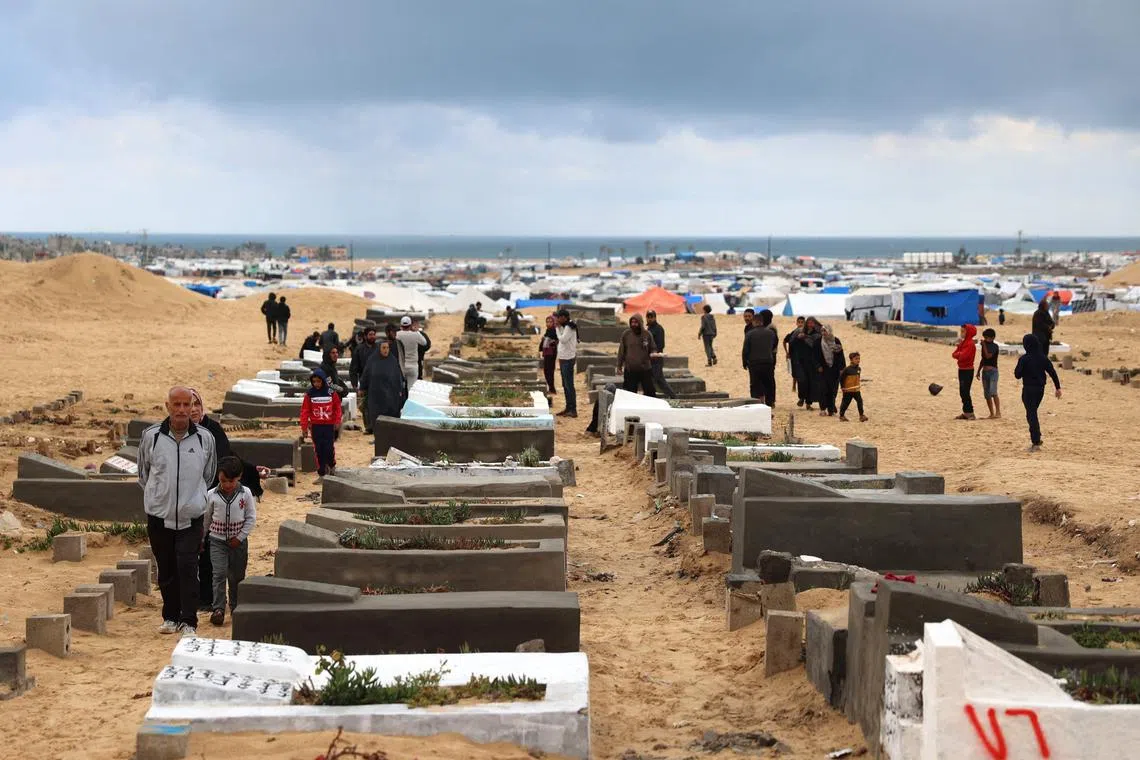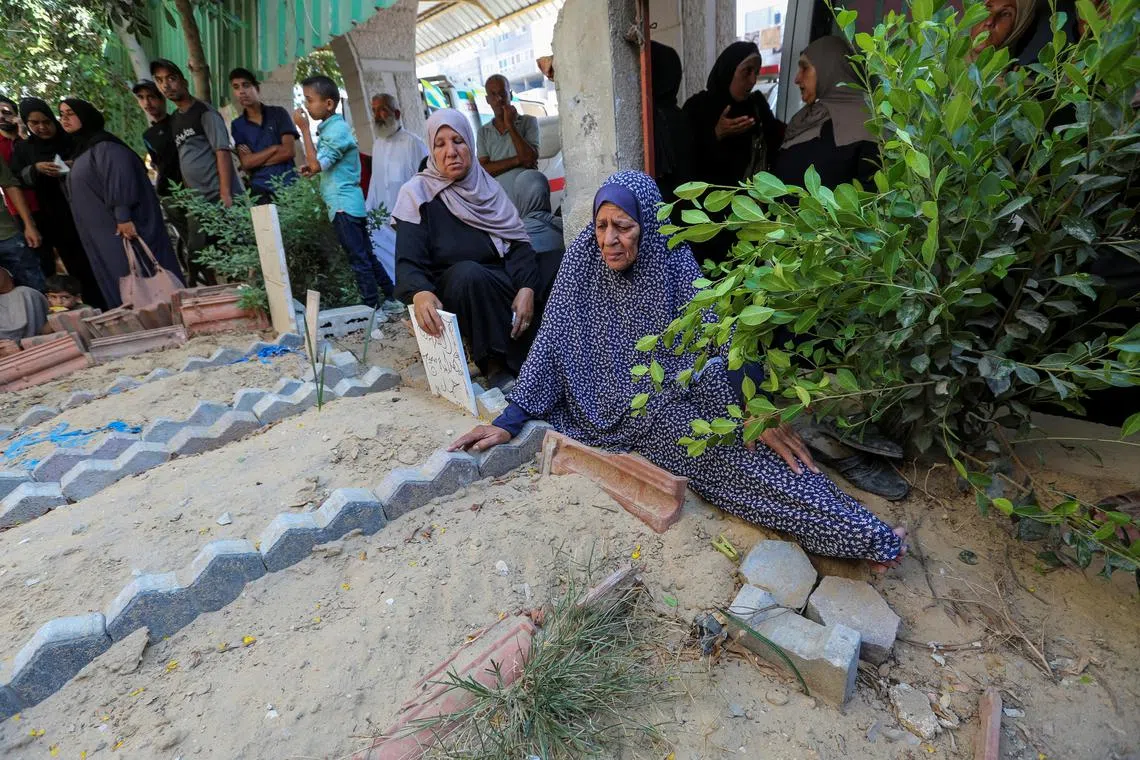Gaza’s overwhelmed undertakers stack ‘graves on top of graves’
Sign up now: Get ST's newsletters delivered to your inbox

Gravedigger Saadi Hassan Barakeh building walls for a shallow grave at a cemetery in central Gaza.
PHOTO: AFP
Follow topic:
DEIR AL-BALAH, Gaza Strip – Undertakers are working like bricklayers in a Gaza cemetery, piling cinder blocks into tight rectangles, side by side, for freshly dug graves.
More than 10 months into the Gaza war, so many bodies are arriving at the cemetery in Deir Al-Balah that the men, working in the hot sun, hardly have space to bury them.
“The cemetery is so full that we now dig graves on top of other graves. We’ve piled the dead in levels,” said Mr Saadi Hassan Barakeh, leading his team of gravediggers.
Mr Barakeh, 63, has been burying the dead for 28 years. In “all the wars in Gaza”, he said he has “never seen this”.
Previously, Mr Barakeh also oversaw burials at the nearby Ansar cemetery, which covers 3.5ha.
But now “the Ansar cemetery is completely full. There were too many dead”, he said, his clothes smeared in dirt from digging graves.
He now handles just the Al-Soueid cemetery, with its 5.5ha of graves. Yet, even with one cemetery instead of two, he works “every day, from six in the morning to six in the evening”.
“Before the war, we had one or two funerals per week, maximum five,” he said, wearing a white prayer cap that matched his long beard.
“Now, there are weeks when I bury 200 to 300 people. It’s unbelievable.”
Gaza’s death toll of just over 40,000 in more than 10 months of war, according to the Hamas-run territory’s Health Ministry, is straining its people as well as its cemeteries.
Mr Barakeh bears daily witness to the tragedies. Hoe in hand, he gives encouragement to his 12 workers as they prepare and close dozens of graves every day.
At night, however, some images are hard to forget.
“I can’t sleep after seeing so many mangled children’s bodies and dead women,” he said, adding: “I buried 47 women from one family.”

Palestinians visiting the graves of loved ones killed in combat strikes by the Israeli military across Gaza.
PHOTO: AFP
The Oct 7 Hamas attack
Militants also seized 251 people, 111 of whom are still held in Gaza, including 39 the Israeli military said are dead.
Israel’s retaliatory military offensive has killed at least 40,005 people in Gaza, according to the Health Ministry, which does not provide a breakdown of civilian and militant deaths.
“I buried a lot of women and children, and only two or three guys from Hamas,” said Mr Barakeh.
If Israelis “have a problem with (Yahya) Sinwar, why do they harm children?” he said, referring to the alleged Oct 7 attacks’ mastermind who is now Hamas’ overall leader.
“Let them kill Sinwar and all the others, but why the women and children?”
Mounds of freshly dug soil are reminders of recent burials. Graves with white headstones fill nearly all the available space, while men dig new holes in the few vacant areas.

Palestinians sitting next to the graves of their relatives killed in Israel’s offensive that has so far left at least 40,000 dead.
PHOTO: REUTERS
The team forms a human chain to carry the cinder blocks, whose price has soared since Gaza’s factories closed due to a lack of fuel and raw materials.
“One shekel (35 Singapore cents) before the war, 10 or 12 today,” he lamented.
Besides gravediggers and the workers carrying cinder blocks, hardly anyone comes to funerals anymore, Mr Barakeh said.
“Before the war, there were sometimes 1,000 people at one funeral. Today, there are days when we bury 100 people, and there aren’t even 20 to lay them to rest.”
High above his head, the constant hum of an Israeli surveillance drone serves as a reminder of the aerial threat creating a steady stream of bodies. AFP

